The Three Fifty Dairies: Part 1
To a younger me, motocross at 30 did not look like this…
I always assumed that I would be riding still. Maybe I would have made the transition to mini-dad already by this point. But I had assumed, for sure, that my best days of motocross were behind me. Maybe they are to a certain extent, as is the nature of getting older, but to claim this, we would need to look at the defining metric of ‘best’.
Maybe my best days of racing motocross are gone in the sense that I’m not travelling 20 hours every 14 days to compete in the Sunshine State Series any more. Or that my ambitions of being a Pro, getting a factory ride and living in the US are also long gone. But I’m not sure that is the metric that I would use to define my ‘best days of motocross’.
If I define ‘best’ by my passion for the sport, my love of riding, and my want to improve each time I’m on the bike; or the fact that I am still travelling with my parents to races at 30. Then maybe I could make the argument that I’m still right in the sweet spot for motocross, and I’m in fact living through the period of ‘best’ right now.
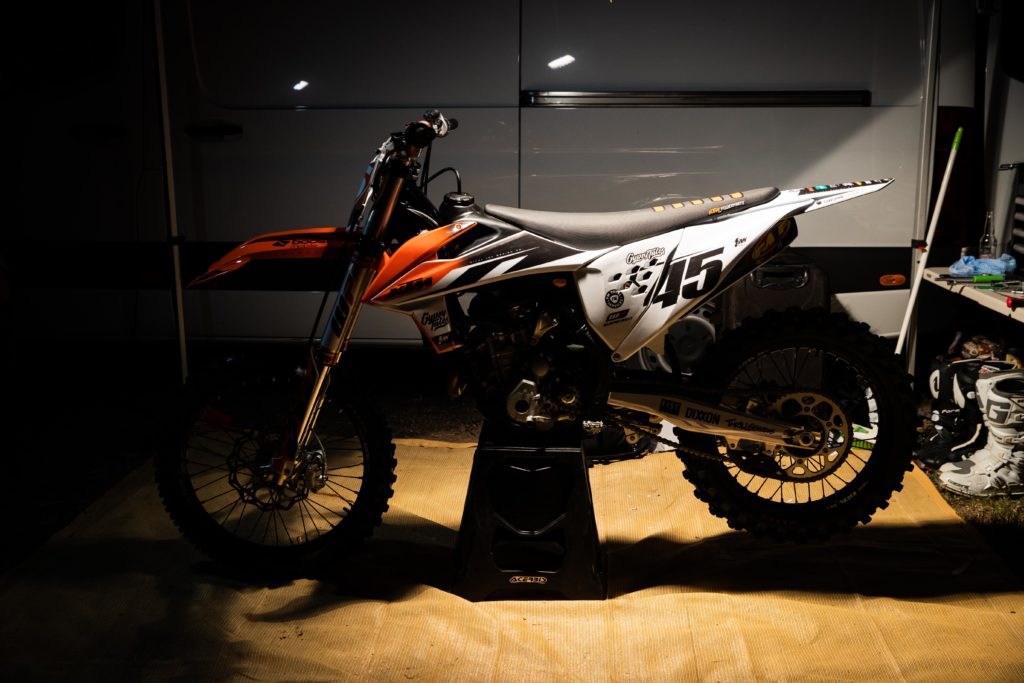
Maybe I thought my best days of motocross would be behind me because that’s what you get told. You get told that you need to grow up at some point. And this notion is backed by the fact that you see the stars of the sport retire in their mid-twenties. The guys still racing at the top level in their thirties, like Nate Ramsey and Mike Larocco, are the outliers.
For a while there, in my late twenties, I had actually resigned to the fact that riding couldn’t and wouldn’t be as fun as it used to be and that my best days were behind me. Thanks to a combination of factors, and regardless of what I’ve been told, I feel like my thirties might just be the most fun I’ll ever have on two wheels. One of those factors is the reason for writing this article, and it comes in the form of a 2020 KTM 350SX-F.
Before I get to talking about the bike itself, I wanted to briefly map the road that it took to get to this point; to give some context of where I was at prior to this bike. I had all but quit riding and was focusing on other athletic endeavours, and it was really the community of Gypsy Tales that inspired me to keep riding.
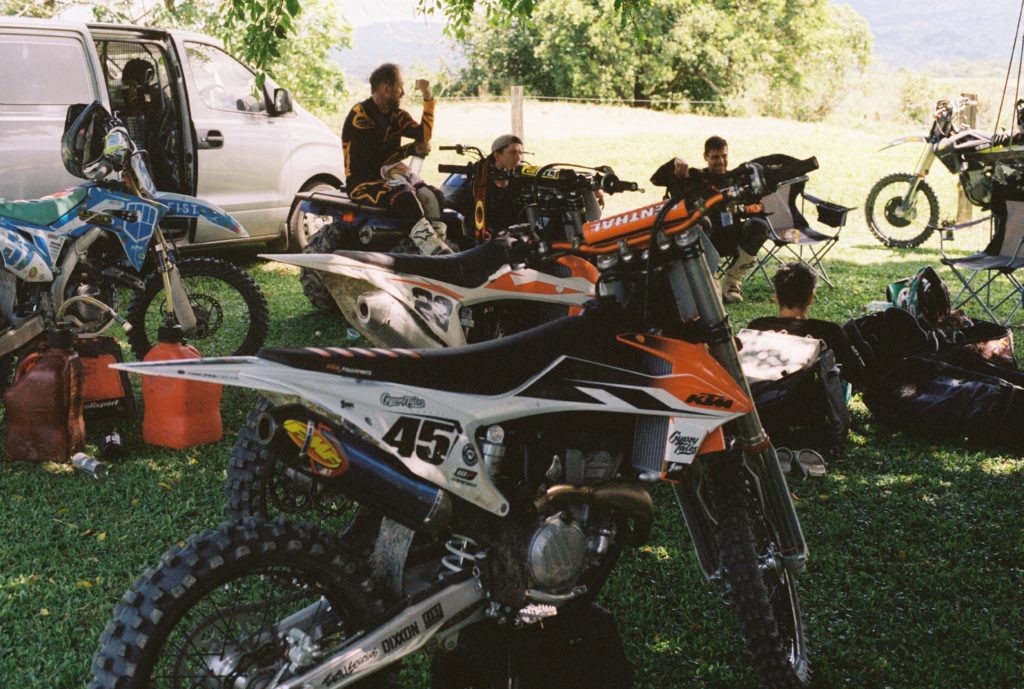
I had just moved back from the US, and didn’t really even have a bike, but I did manage to do the Transmoto 6-Hour in 2016 on a borrowed 250F on the promise that it would just be a bit of fun. A bit of fun was right, and it was the first time I had ever really gone to a race with the word FUN at the forefront of my mind. And while it was maybe one of the most fun weekends I have ever had on a bike, Jesus it was hard. I was still convinced that entering my thirties, it would be pretty tough to enjoy racing like this as the years clicked on.
I loved the event though, and I vowed to do it again the following year and maybe even have a ride or two in the lead-up to the race. The running joke became that I only rode six hours a year and for 2017, that wasn’t far off true. My dad and I custom-built a Screamin’ Eagle two-stroke for that 2017 6-Hour, but we only just had the thing ready for scrutineering. And again the six hours a year joke rang true.
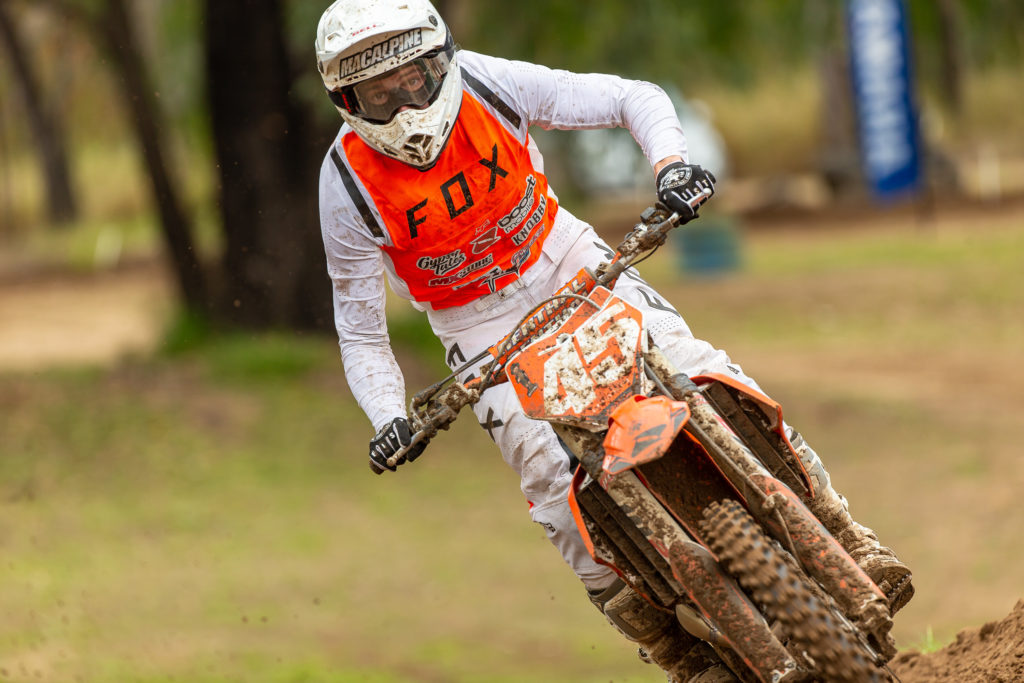
2018 was the year that changed everything for me and my want to ride. I had turned 30, and as I lined up for the Conondale 6-Hour for the third time, I was offered a Husky 300 two-stroke and 350 four-stroke to ride for the day, and everything changed. In the years prior, I struggled with crazy arm pump and I was physically so exhausted by the trails at Conondale, and I didn’t really see it getting easier. Obviously, it’s hard to expect to improve when you aren’t logging a lot of bike time, but it kind of becomes a vicious cycle.
I threw my leg over the Husky FE350 and set off on my first lap, and I couldn’t wipe the smile off my face. It was this light bulb moment as I figured out that I just hadn’t been on the right bike these last few years and that if I wanted to enjoy my riding again, I first needed to start with the right tool for the job. This 350 was the right tool.
I’m not sure why it was a light bulb moment for me the way that it was. I had ridden a 350 before, and I absolutely loved it. While I was living in the US working for the JDR Motorsports team, I was able to ride a 2012 Factory KTM 350SX-F when Tye Simmonds moved to the 450SX-F for the Outdoor season. I absolutely loved that bike, but it hadn’t really occurred to me that owning a 350 would be the gateway into my best years of riding bikes.
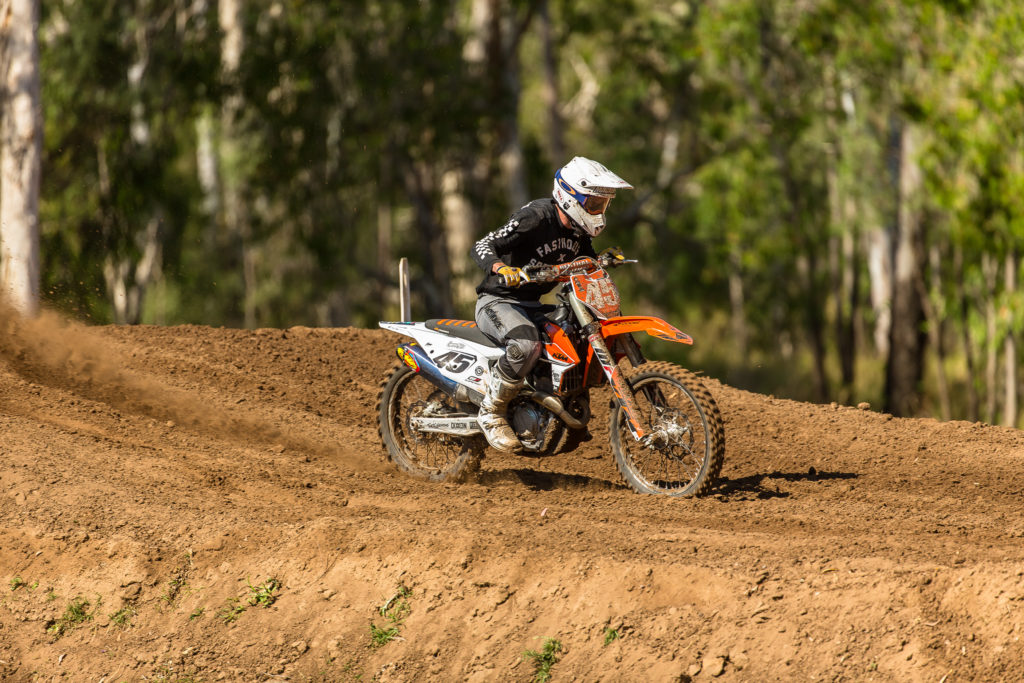
That first lap on the 350 at Conondale was the most enjoyable lap of the three years I had done the race. On the 250 I had to override, the set-up of the suspension and the gearing was way off, and that combination of factors sucked the life out of me. By the end of the lap, I was over it and keen to round the last bend and collapse into my camp chair.
I had mixed and matched bikes in those years and would jump on a mates 450 to see if more power was the answer. Maybe that extra torque would smooth out the ride, and take away the need to really keep the thing going; in turn, saving energy. It’s good in theory until you inevitably do get tired, the extra weight starts to sap your energy and that extra power that let you stop overriding is now getting you into a new kind of trouble. Out of the frying pan and into the fire! It took one lap, and a flashback of that 2012 summer on the JDR KTM 350SX-F, to realise that if I wanted to really enjoy my riding, I was going to have to be on a 350 long term.
Unfortunately, I wasn’t in a position to own a 350 straight away. I went back to riding an old 450 in an effort to try to ride my way back into shape and to be fair, I did start to enjoy riding a 450 the more time that I spent on it. But the reality was that no matter how much I rode, those bikes would always be too much. Sure I could get away with riding them, and I could still have fun, but I was never going to be good enough to really enjoy riding 450s full-time.
At the end of the day, I don’t get to ride as often as I want and getting time to travel to a track, pay the fee, do the filter, clean it once I’m done, wash the gear, etcetera, gets harder and harder. So to even have the risk of getting to the track and feel like a 450 rode me around, and not the other way around, is just too much. I want a 1:1 ratio of riding:fun at this stage, and I’ve made up my mind that a 350SX-F is going to give me the best shot at that ratio.
In 2020, the opportunity came to work with KTM on a 350SX-F project bike, and it was an absolute no-brainer. At 32, the summer of 2020 will be the summer of love. I write this just days before my first real motocross race since 2008, and I am as excited as ever to be behind a gate once more.
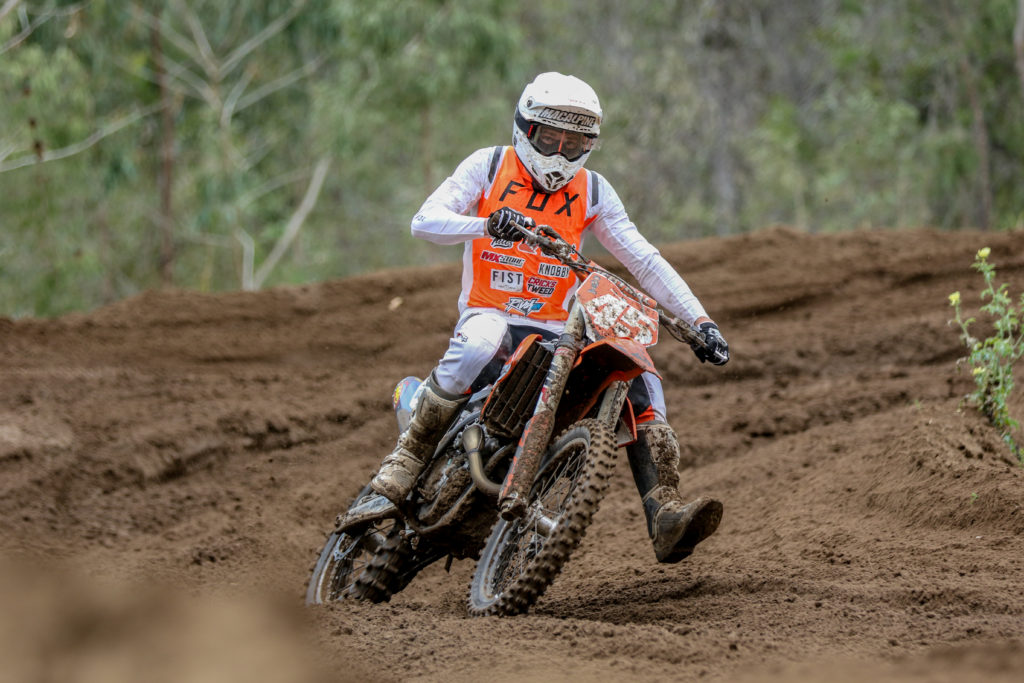
In the interest of full disclosure, I need to mention that I got off to a rocky start with the preparation for this race. On my first ride on the 350SX-F, I made a judgement error on a jump and that, coupled with the unfortunate location of a fence, caused me to hit the ground hard and fracture my hip and tear some ligaments. It’s important to note that this is just the nature of the beast and not something you can put down to anything other than rider error.
Regardless of hitting the deck on day one, I was determined to get through the required rehab and race back to the bike as fast as I possibly could. The stoke was real! I had put enough time on the 350SX-F to know that I had made the right call, and now it was just a matter of time until I could throw my leg back over and keep the good times rolling. I have been back on the bike for a month and put 13 hours on the 350SX-F before we head to Rocky.
One of the main takeaways from my time living in the US in regards to motocross racing at the grassroots level was the health of the racing and participation in the 30+ class. In Australia, the Vet classes start at 35, and I have long thought that this is a flaw in the system. At least for the people I know, 30-35 is their last taste of freedom before the pressure of family and kids start to limit the time available to actually race.
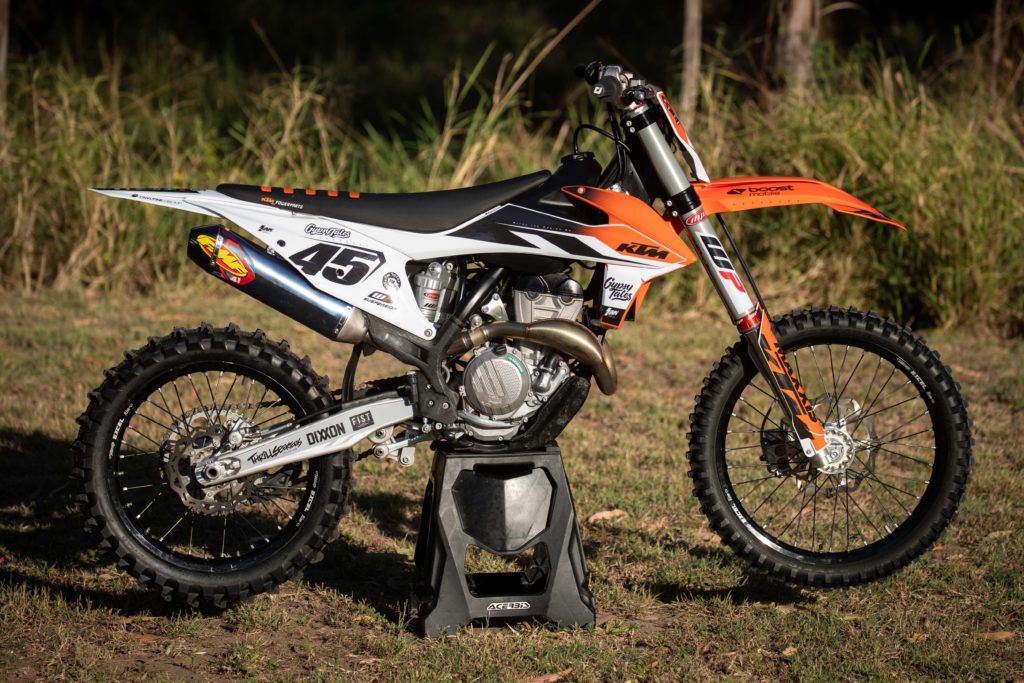
I know for me personally, the idea of lining up to race against a bunch of 17-year-old kids who are still chasing the dream, and won’t hesitate to take you out on the first lap after a bad start, or worse if you’re in the way while being lapped. So there is this five-year window that I would have had to wait until I could, in fact, join the sensible crew of vets who all have work on Monday and have no aspirations of a factory ride.
I have long been campaigning for a 30+ class, and the King of Capricorn event crew in Rockhampton were kind enough to entertain my idea of running a 30+ class for this weekend’s racing.
My goal with this bike is simple: To make the most rider-friendly motorcycle possible. I’m chasing the Goldilocks zone … and I think I might have found it.
Since getting the KTM 350SX-F and doing the grand tour of public Queensland tracks, I’ve been hit with a lot of questions about the bike, and hopefully, I will be able to touch on most of them over these articles. The one consistent thing is people thinking that the 350-SX-F sits directly in between at 250SX-F and a 450SX-F, so that might be the place to start.
Put simply, to wrap your head around the 350SX-F and understand what it is, you need to understand what it’s not. It’s not a bike that sits in the middle as most people think. You need to think of it in terms of a Mortal Kombat character that you are selecting to fight with. In the same way that characters have a sliding scale health, attack, recovery and stamina; the 350SX-F is its own character with its own sliding scale.
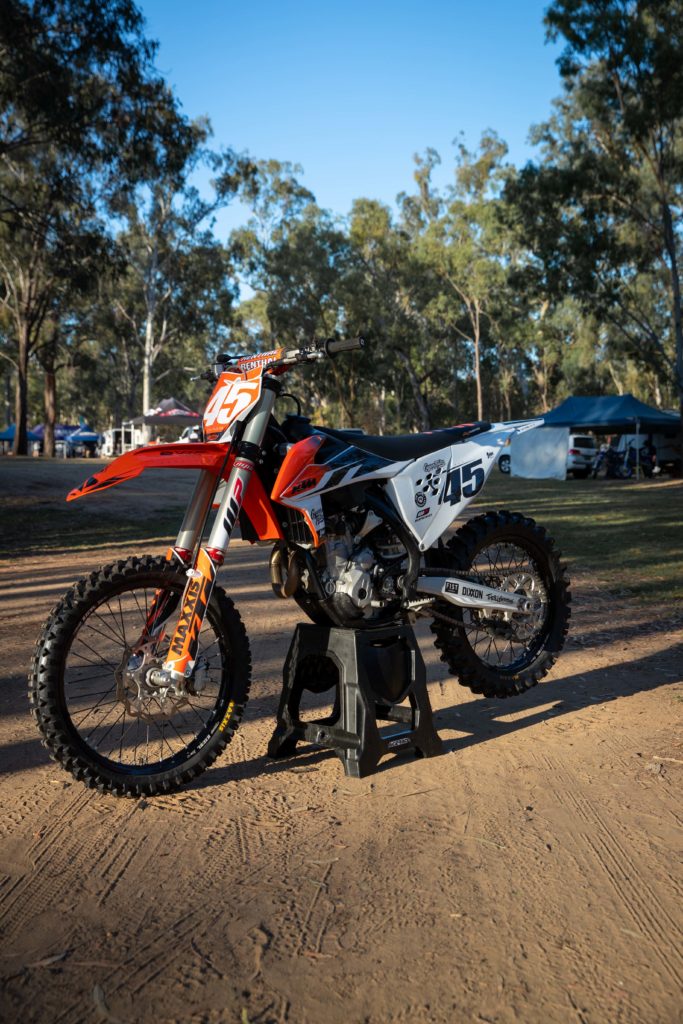
If you have put seat-time in on both a 250SX-F and a 450SX-F, then we could have those bikes as our start and end points of our character attributes.
When people have asked me about the bike, the first question seems to always be about to motor. You could just put the motor down as an attribute, but I think that it needs to be split into two categories: Torque and revs.
The motor has less overall torque than your standard 450SX-F, but it has a heck of a lot more than even a modified 250SX-F. Like a lot more. More than enough torque to ride it in that part of the powerband and really move. If you tried to do that on even a modified 250, you wouldn’t be able to get away with it in the same way. The 350SX-F, though, has enough foot-pounds of torque that you can base your riding style around it.
In my personal experience, it has more than enough torque to ride it in third gear around even the tightest inside ruts. It doesn’t have the arm-jerking torque of a 450, and I’m totally fine with that. At this point in my riding life cycle, it suits me just fine to base my riding style around the lower end of the rev range, with my focus being smooth and precise riding.
The real meat of the power beneath the bonnet of the KTM 350SX-F though is when you start to enter the upper rev range, with the bike making its peak horsepower at 13,500RMP. This thing really revs, and if you want to get the absolute most out of it, you are going to spend some time amongst the double-digit rev counter.
How does this unique powerplant translate on the track? For a practical example, I will talk about how I use this motor on one of my favourite tracks: MXFarm in Gympie. In the last sections of the main track, there feature a series of tight switchbacks that always develop deep inside ruts. It then opens up to a triple into a long bermed turn that floats you over a downhill double, into another banked left-hander, over a scrubby double and then up the hill into a 130ft uphill triple (maybe the most fun jump I’ve ever hit).
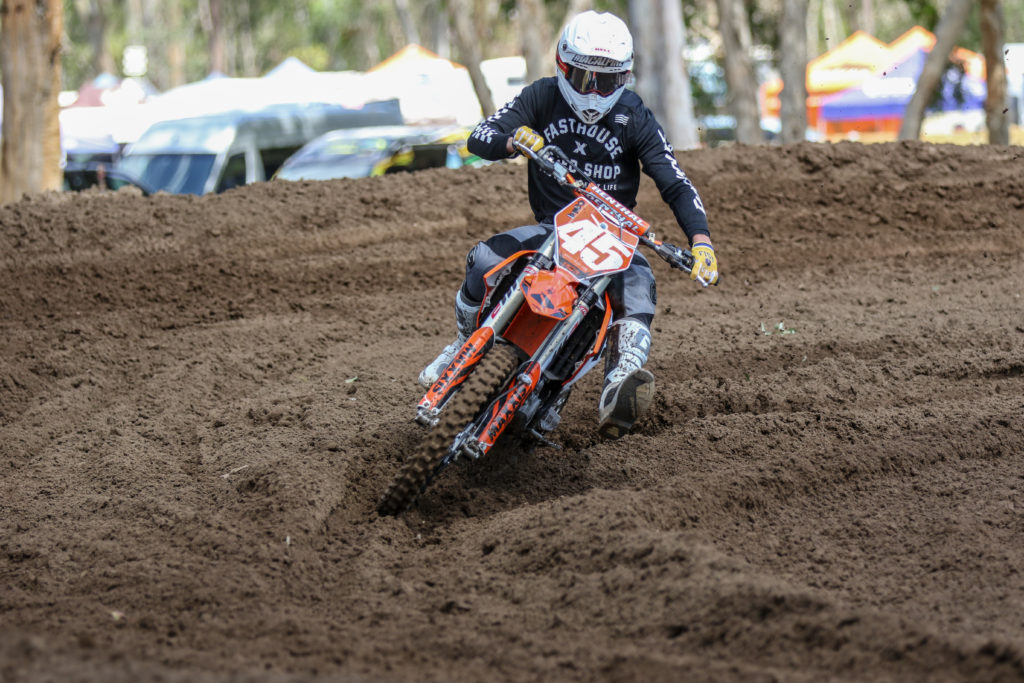
All of this section is done in third gear using the motor from rolling into the first of the ruts at idle, all the way to what I would guess is about 11,000 revs heading up the triple. This is done without much of a need to use the clutch or even thinking about changing gears. The delivery of torque through the inside ruts is smooth and predictable each lap and the motor revs freely en route to the triple. It’s a great example of the versatility of the engine on the 350SX-F.
While I love this motor, it might be what happens when you try to stop and turn that makes me appreciate this bike every time I ride it. If we go back to our scale and look at how we colour our braking, turning and handling sliders, I am going to put them all basically bottomed out of the 250SX-F end of the scale. This is to me where the juice is with this bike.
I don’t necessarily feel like I’m on a 250SX-F. The 350 SX-F is slightly heavier on a set of scales, but I never find myself wishing the bike would stop better, or even that it’s heavy and tiring. These things simply become a non-issue for me, and I feel confident to focus on riding the bike. In my time riding 450s, I’ve always just felt the weight under braking and into the turns. This never inspired the kind of confidence that would let you just ride the bike. It even felt like the motor was still wanting to push me forwards even with the clutch in and on the brakes. Every blip of the throttle mid-turn made it feel like the bike wanted to release from my desired lean angle and head back to vertical. I’m well aware that this could be put down to a lack of skill, but hey, it is what it is … I still want to be able to enjoy riding.
So, what have we done so far to the 350SX-F? Some pictures accompany this article from our initial rides where the bike was dead stock, with the addition of an FMF 4.1 slip-on exhaust and a set of Renthal Twin Walls (which were subsequently bent day one). Other than that, I bought a few FunnelWeb air filters and an air boot cover for when it was time to wash up, and that is it. I wanted to spend a bunch of time with the bike in the stock form before we did anything else.
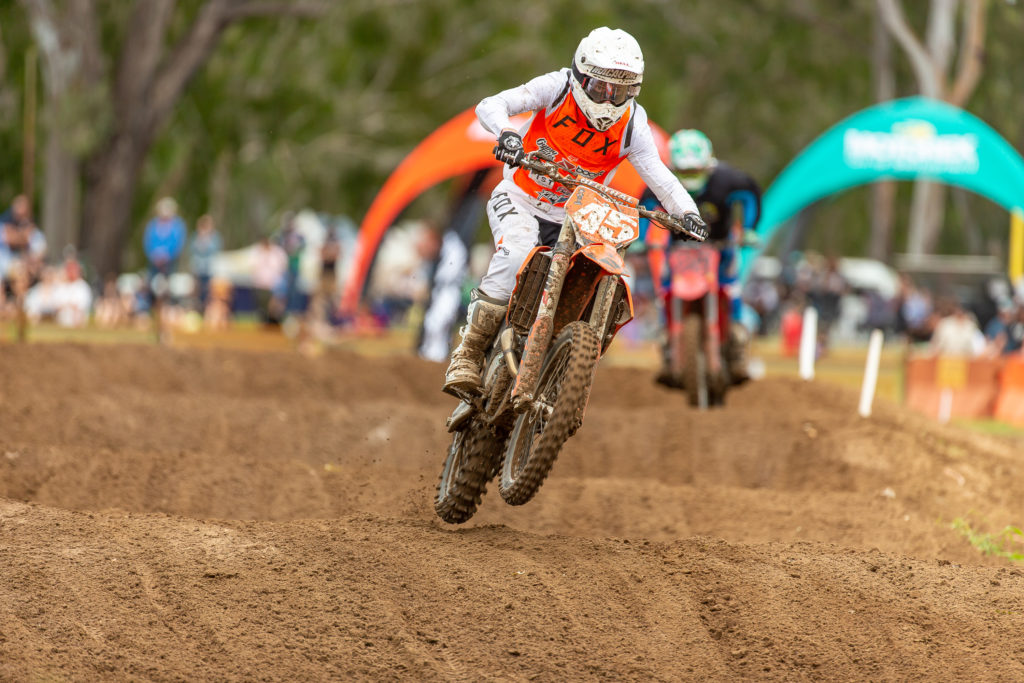
The only crease that I would like to iron out of this bike is in the rear shock. I know it could be fixed with simple valving adjustments, but in stock form (me weighing 75kg) it seems to kind of linger in the middle of the stroke through turns. This makes it feel high in the rear mid-turn, when I would rather feel it gradually sitting down, ready for me to get on the power. Instead of getting that nice squat, I feel like it starts to rebound. Maybe for a heavier rider, this might not be the case at all, but for me, this is the only thing that I would say I want to change on the bike.
Apart from getting the suspension valved more for me and keeping good rubber on the bike at all times, I don’t see the need to do a whole lot more to the 350SX-F. As I write this before the King of Capricorn race, I have 13 hours on the big girl, and I’m so excited to head north up the Bruce Highway and have a crack at another gate drop. Racing a KTM 350SX-F in the 30+ class really does feel like the sweet spot for me!
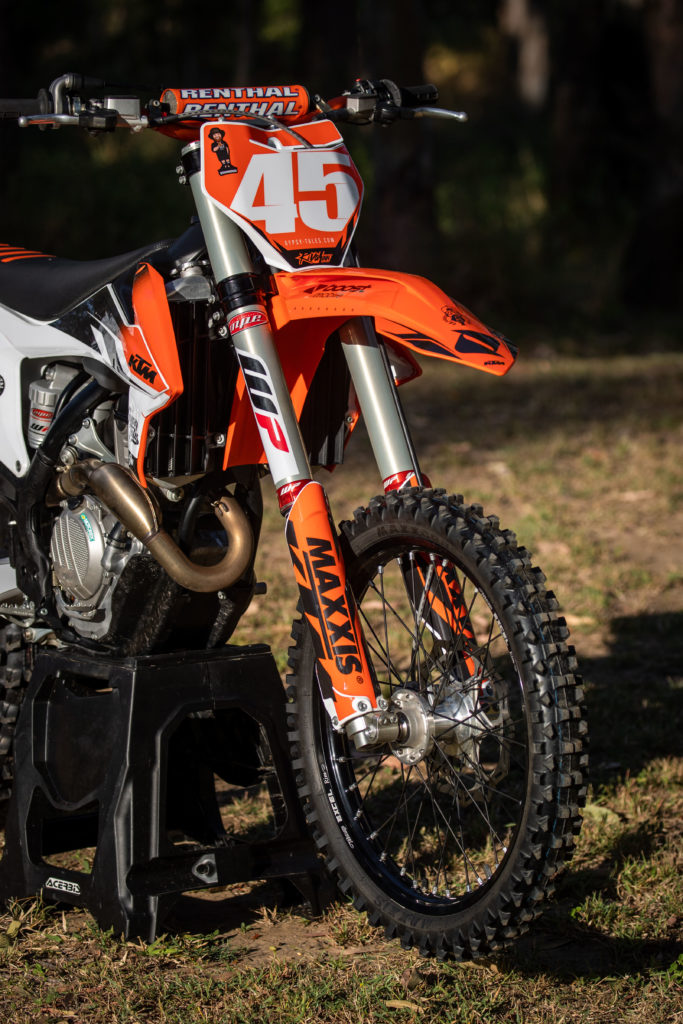
You might notice a little extra bling on the bike in some of the photos before the race (WP Suspension Cone Valve fork … cough-cough), but we are going to get to that in Part 2 of this 350SX-F build. Thanks for reading so far. I’m excited to bring you all more information on an incredible bike.
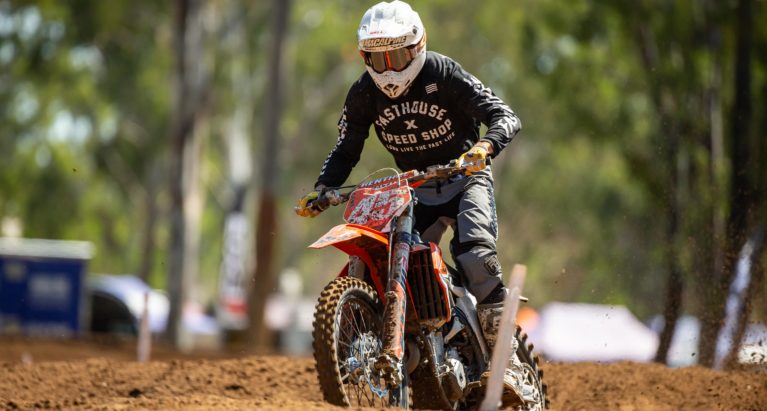


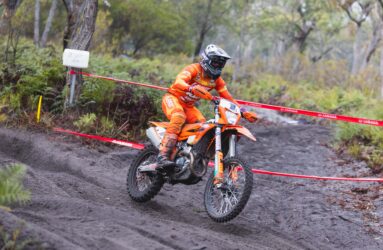
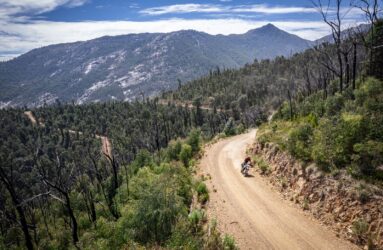
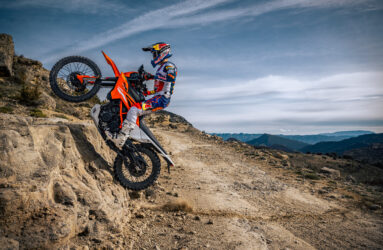
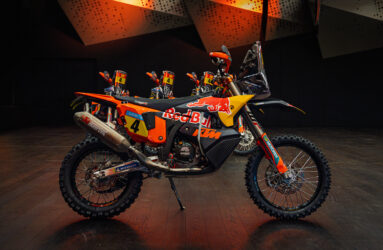
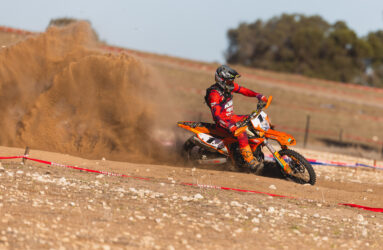
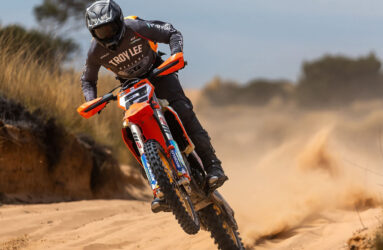
Be the first to comment...